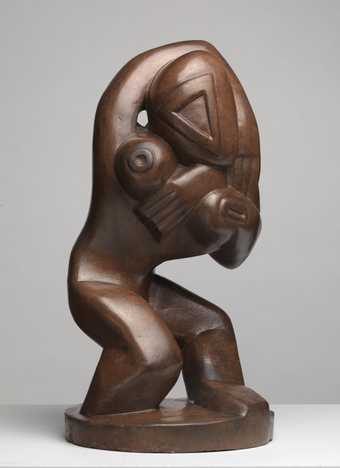
Henri Gaudier-Brzeska, Red Stone Dancer c.1913. Tate.
Henri Gaudier-Brzeska
17 rooms in Historic and Early Modern British Art
The works in this display reveal Gaudier-Brzeska’s constant impulse to capture movement and life in real time
Movement is the translation of life, and if art depicts life, movement should come into art, since we are only aware of life because it moves.
Henri Gaudier-Brzeska was born in 1891 near Orléans, France. He died in 1915, aged only 23. Although his artistic career lasted less than five years, it was one of intense energy and experimentation. By the time of his death, he had produced thousands of drawings and more than a hundred sculptures, in a wide variety of styles.
The works in this display reveal Gaudier-Brzeska’s constant impulse to capture movement and life in real time.
Without formal artistic training or money to pay for models, he instead turned to the world around him for inspiration. Everything was a potential subject – friends and family, strangers in the street, performers on the stage, even animals at the zoo.
Gaudier-Brzeska made almost all his work in Britain. In 1911, he left Paris and settled in London with his partner, the Polish writer Sophie Brzeska, whose surname he added to his own. After an initial struggle for recognition, Gaudier-Brzeska became part of a circle of experimental artists and writers working in Britain. He produced designs for Roger Fry’s Omega Workshops, exhibited with the London Group and the Allied Artists’ Association, and became a central figure in the Vorticist group. His commitment to direct carving – responding intuitively to his material rather than working to a preparatory model – paved the way for later generations of sculptors such as Barbara Hepworth and Henry Moore.
When war broke out in August 1914, Gaudier-Brzeska quickly enlisted in the French army. He was killed in action on 5 June 1915. His friend, the poet Ezra Pound, wrote: ‘A great spirit has been among us, and a great artist has gone.’
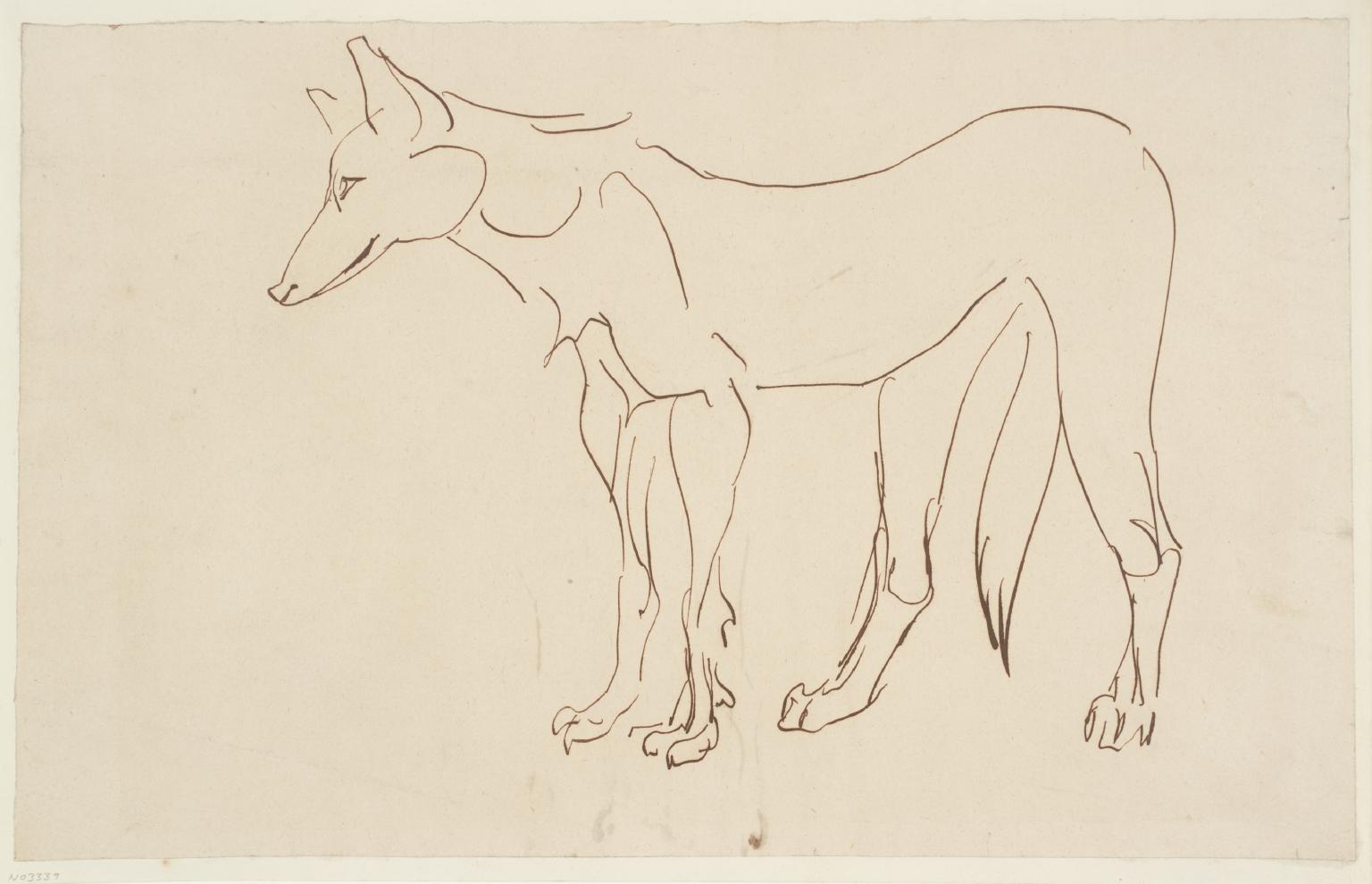
Henri Gaudier-Brzeska, A Wolf 1913
The artist Claude Lovat Fraser supported Gaudier in several ways, including the gift of tickets to Regents Park Zoo in London. There Gaudier spent his weekends sketching the animals so quickly that the ink was often still wet as he turned the page. With a few elegant lines and no shading, he managed to convey three-dimensional form and capture a momentary view of a beast in movement. Resting or alert, standing or pacing, each animal's unique personality is encapsulated in these drawings.
Gallery label, September 2004
1/24
artworks in Henri Gaudier-Brzeska
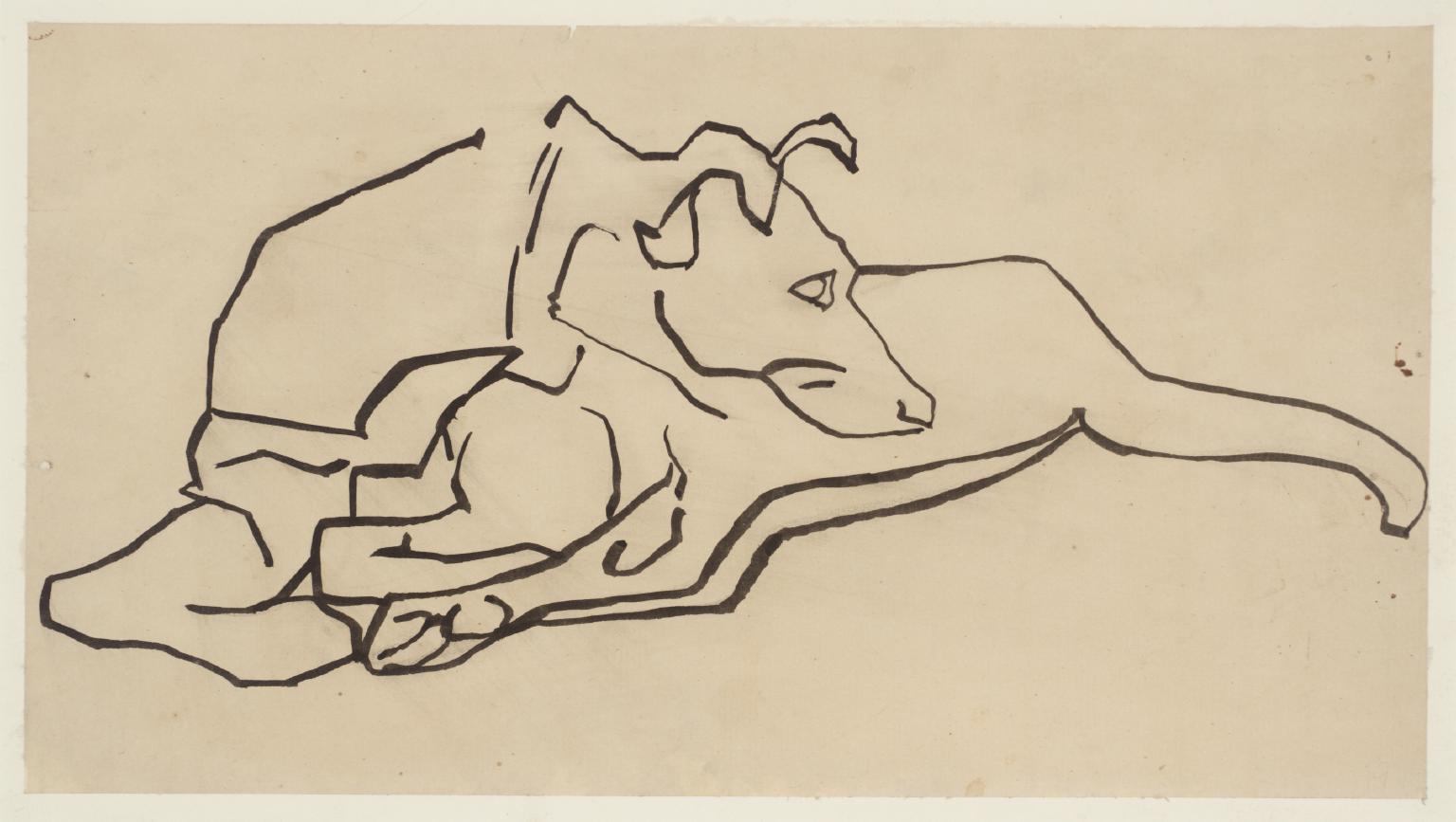
Henri Gaudier-Brzeska, A Dog c.1913
2/24
artworks in Henri Gaudier-Brzeska
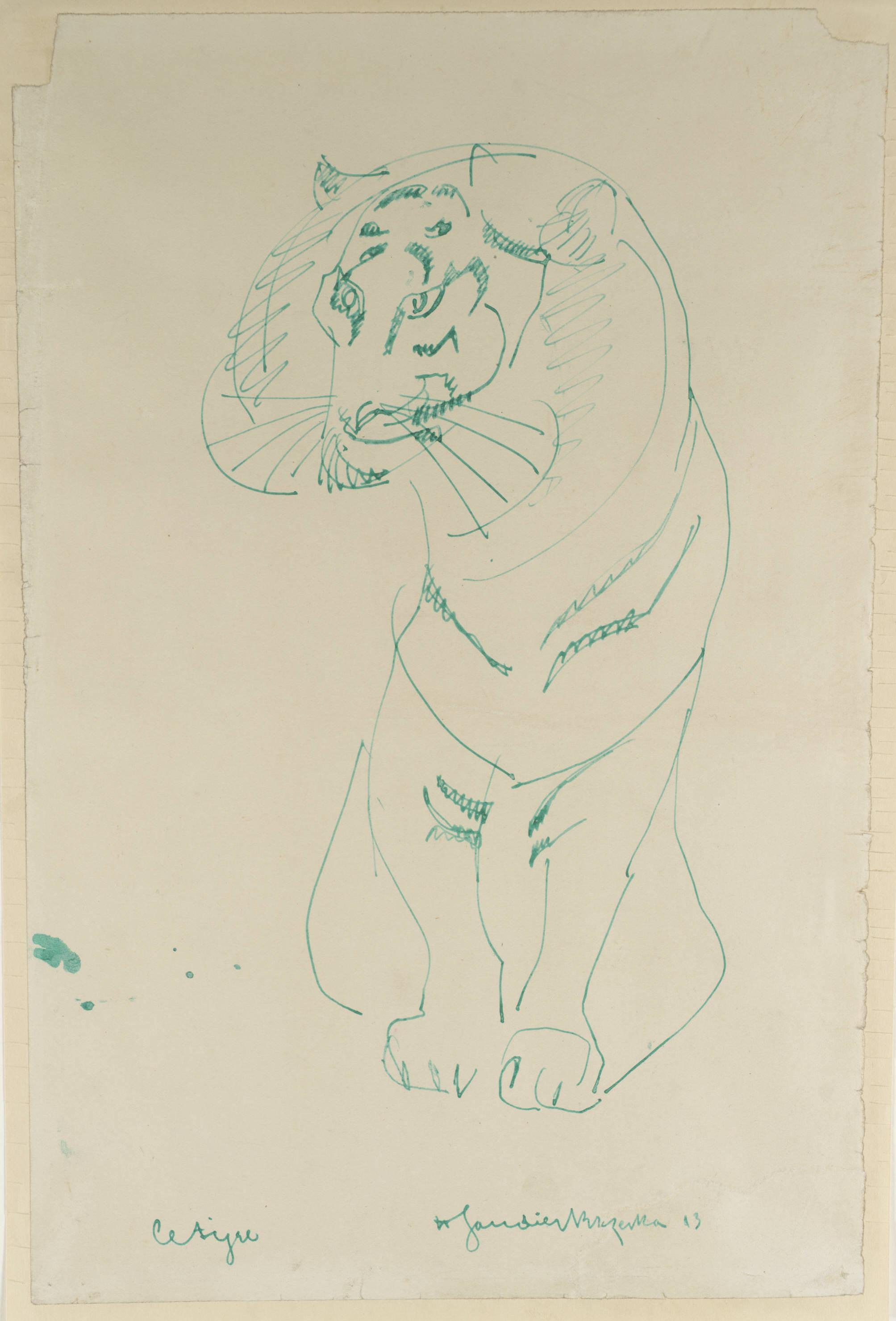
Henri Gaudier-Brzeska, Tiger 1913
3/24
artworks in Henri Gaudier-Brzeska
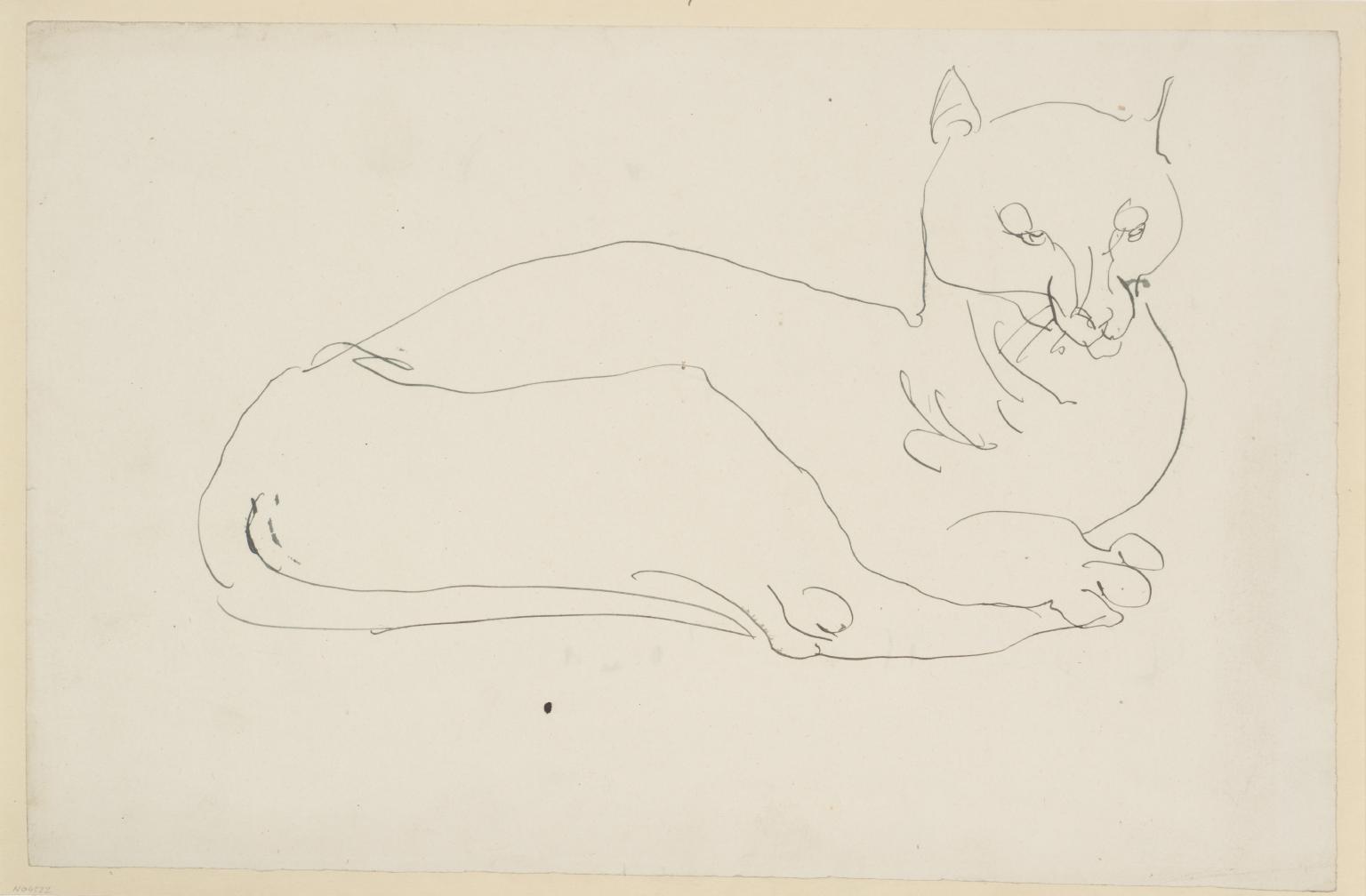
Henri Gaudier-Brzeska, Leopard I c.1912–13
4/24
artworks in Henri Gaudier-Brzeska
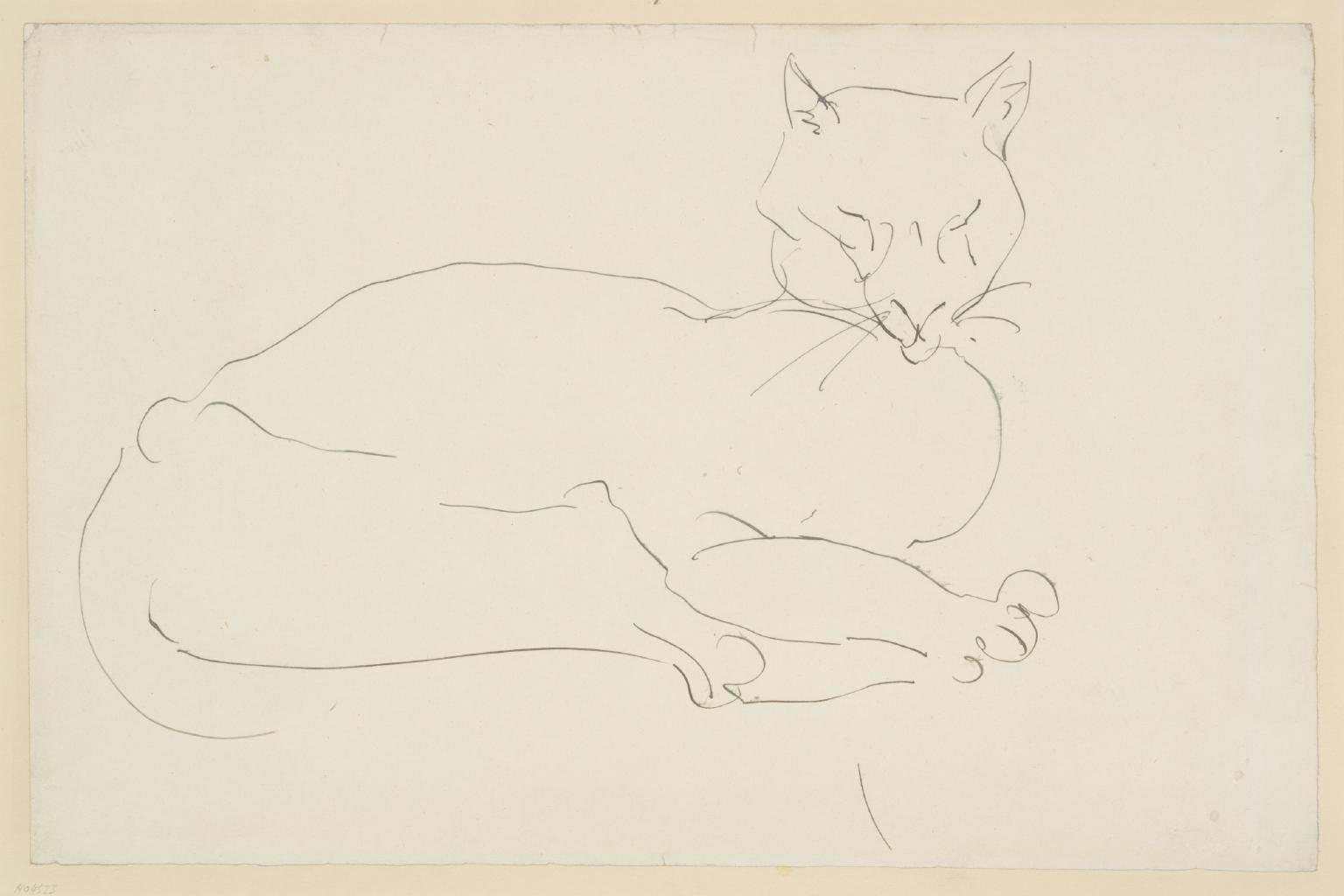
Henri Gaudier-Brzeska, Leopard II c.1912–13
5/24
artworks in Henri Gaudier-Brzeska
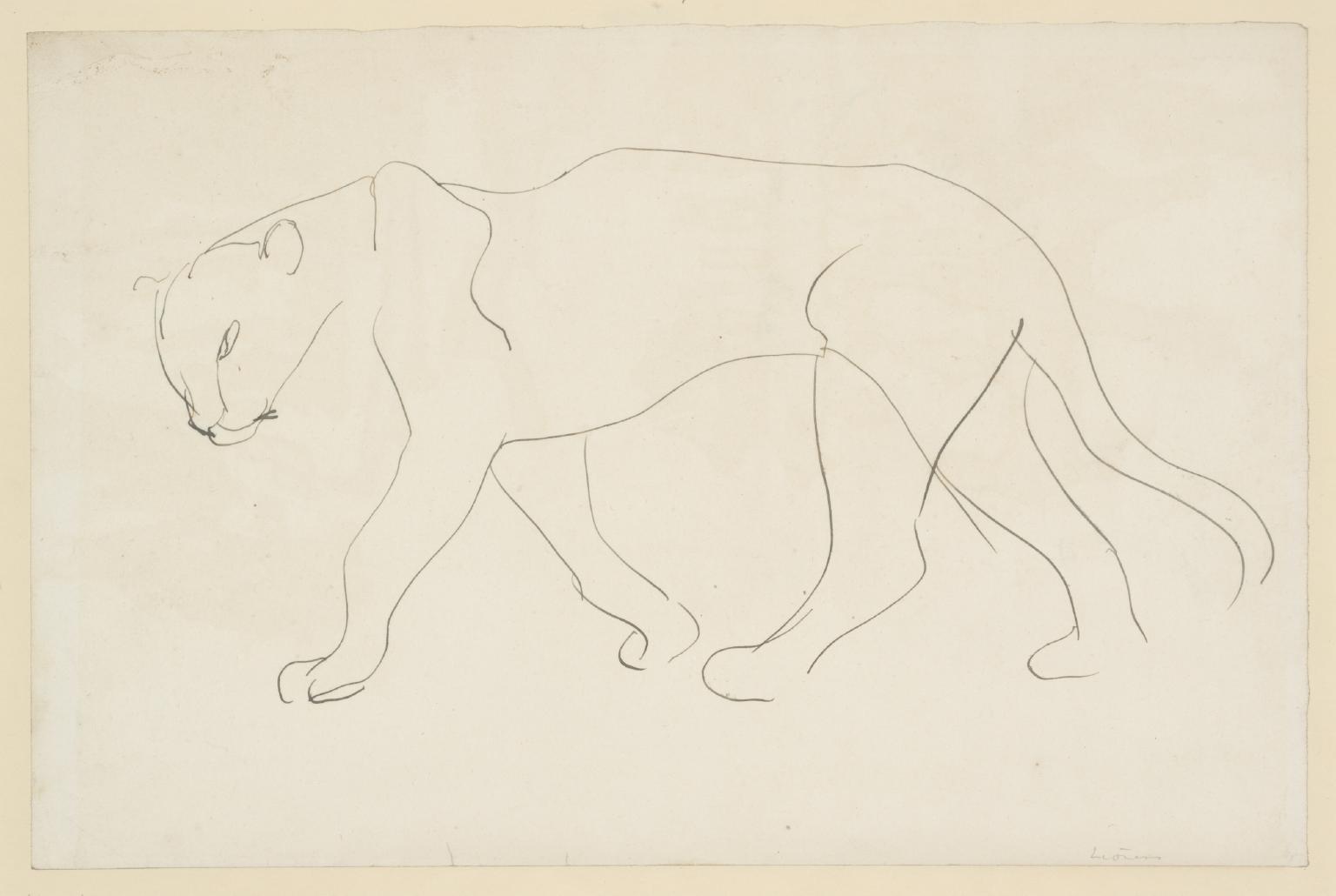
Henri Gaudier-Brzeska, Jaguar c.1912–13
The artist Claude Lovat Fraser supported Gaudier in several ways, including the gift of tickets to Regents Park Zoo in London. There Gaudier spent his weekends sketching the animals so quickly that the ink was often still wet as he turned the page. With a few elegant lines and no shading, he managed to convey three-dimensional form and capture a momentary view of a beast in movement. Resting or alert, standing or pacing, each animal's unique personality is encapsulated in these drawings.
Gallery label, September 2004
6/24
artworks in Henri Gaudier-Brzeska
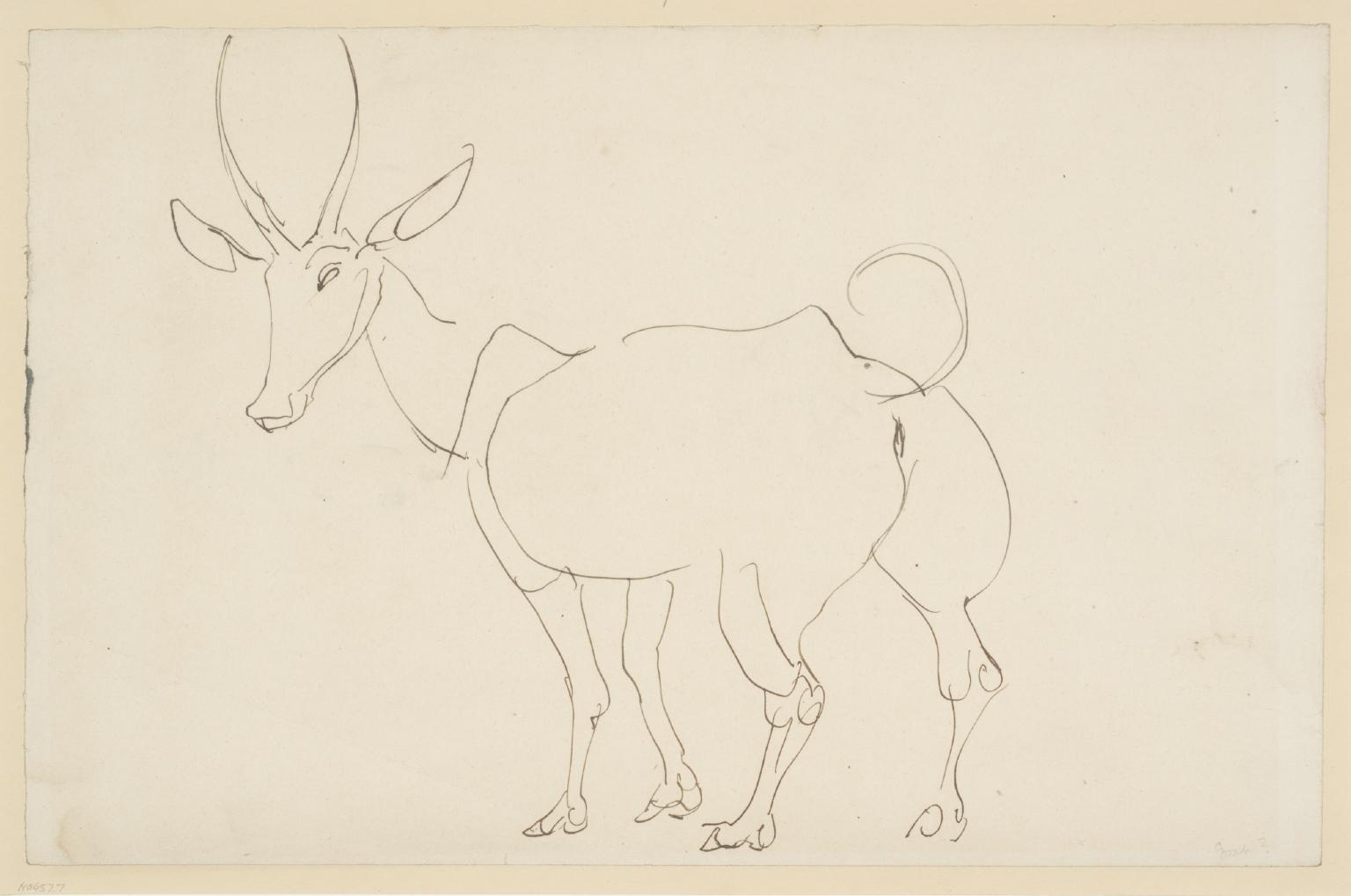
Henri Gaudier-Brzeska, Eland c.1912–13
7/24
artworks in Henri Gaudier-Brzeska
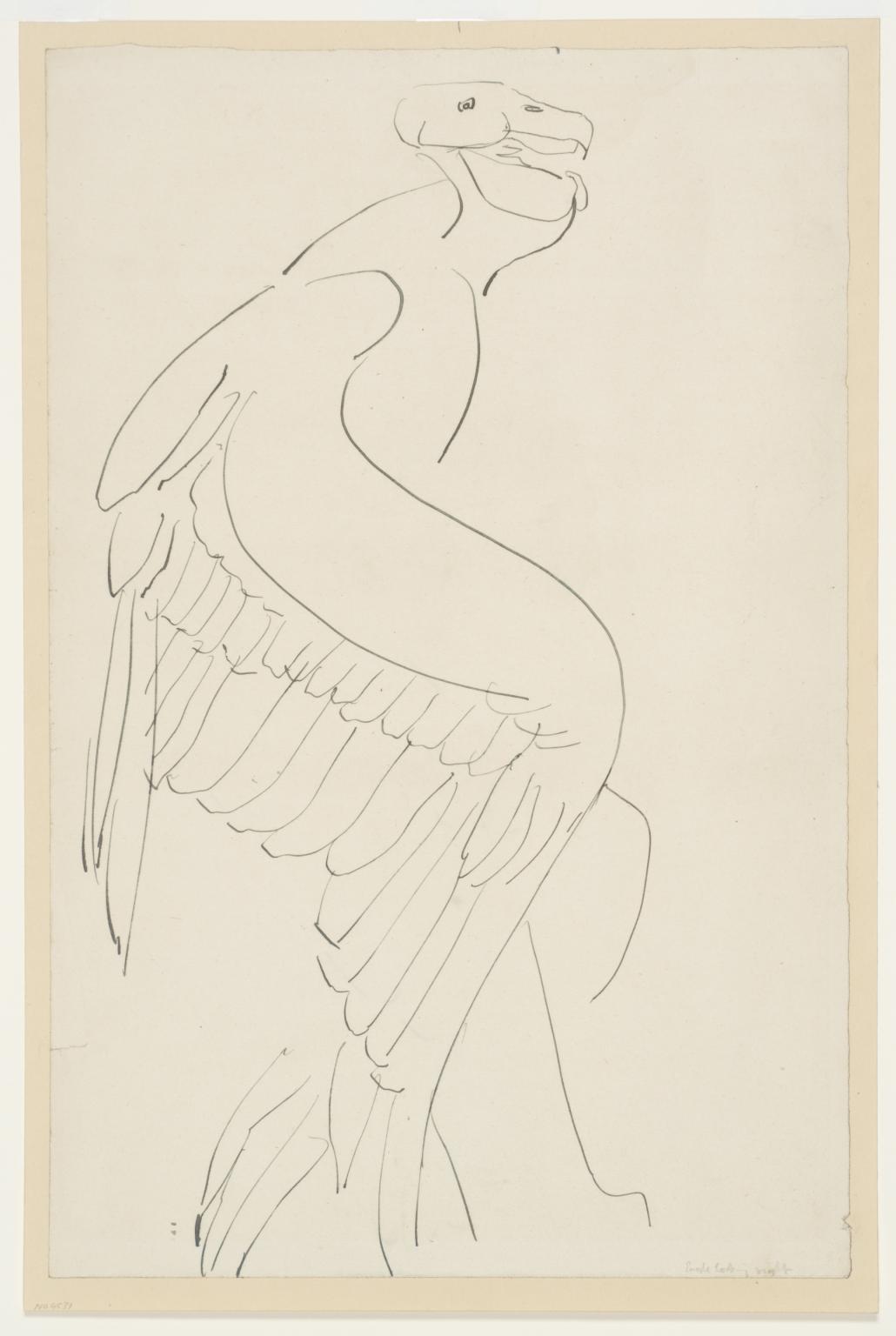
Henri Gaudier-Brzeska, Vulture II c.1912–13
8/24
artworks in Henri Gaudier-Brzeska
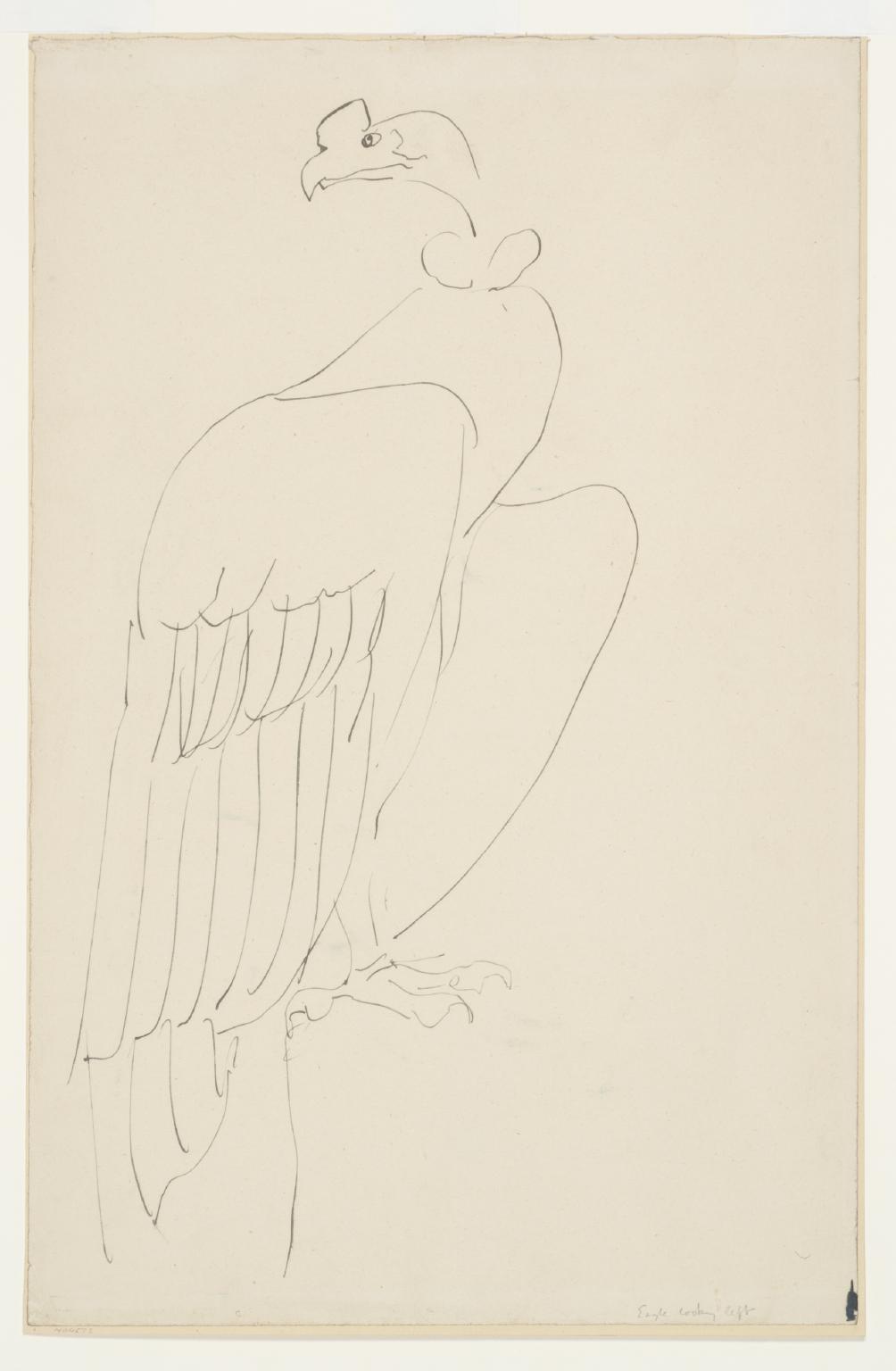
Henri Gaudier-Brzeska, Vulture III c.1912–13
9/24
artworks in Henri Gaudier-Brzeska
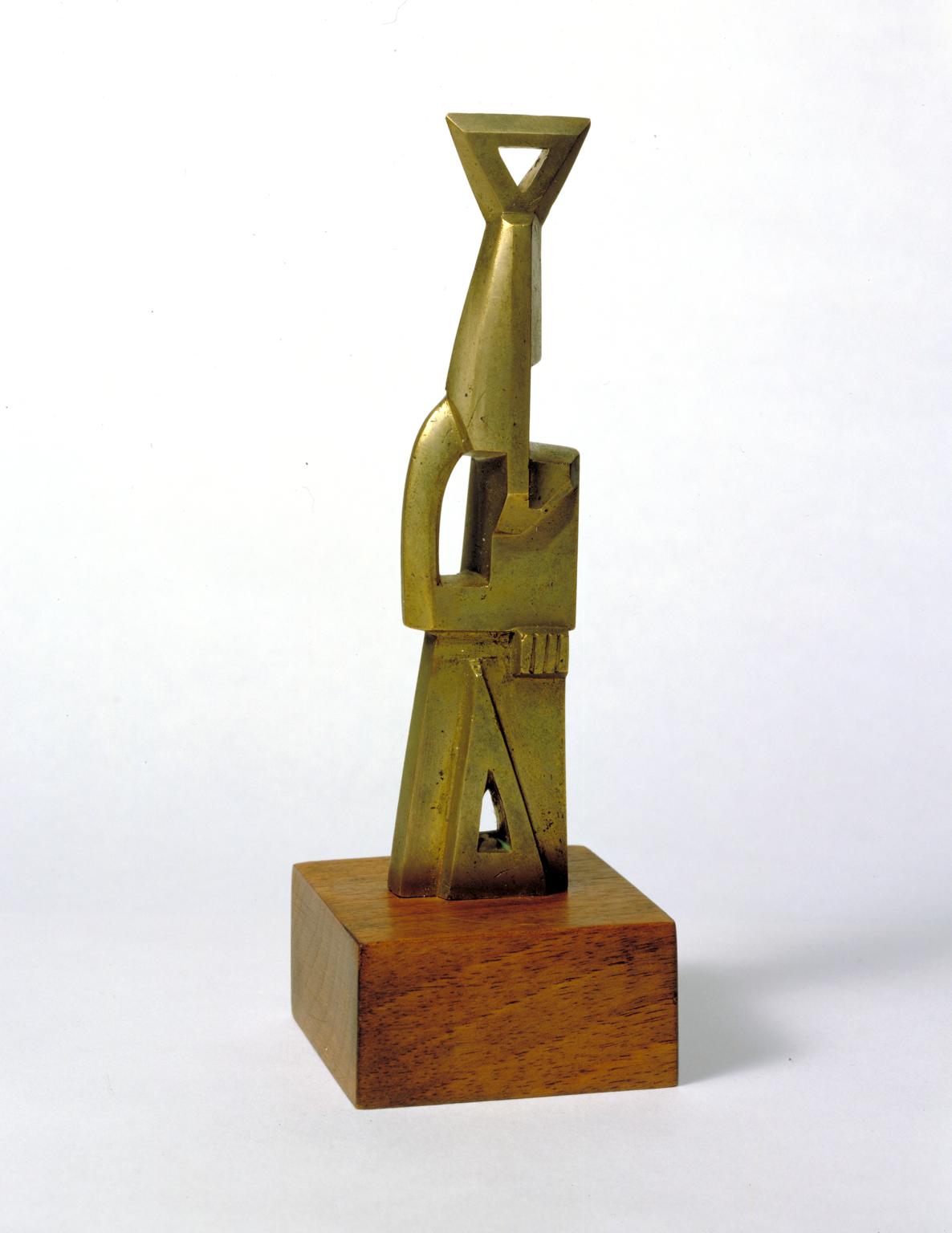
Henri Gaudier-Brzeska, Ornament 1914
This is one of nine casts from an original work in chiselled brass. According to Ezra Pound it was the first and best of Gaudier's experiments with cut brass, which include 'Doorknocker', also in this display. Here, as in other seemingly abstract works, Gaudier still alludes to recognisable forms. For example, from a certain angle this abstract ornament also resembles a human figure. The work, though small, clearly demonstrates Gaudier's understanding of Cubism: after Alexander Archipenko, he was among the first sculptors to use completely penetrated forms so that the viewer can see right through the sculpture.
Gallery label, August 2004
10/24
artworks in Henri Gaudier-Brzeska
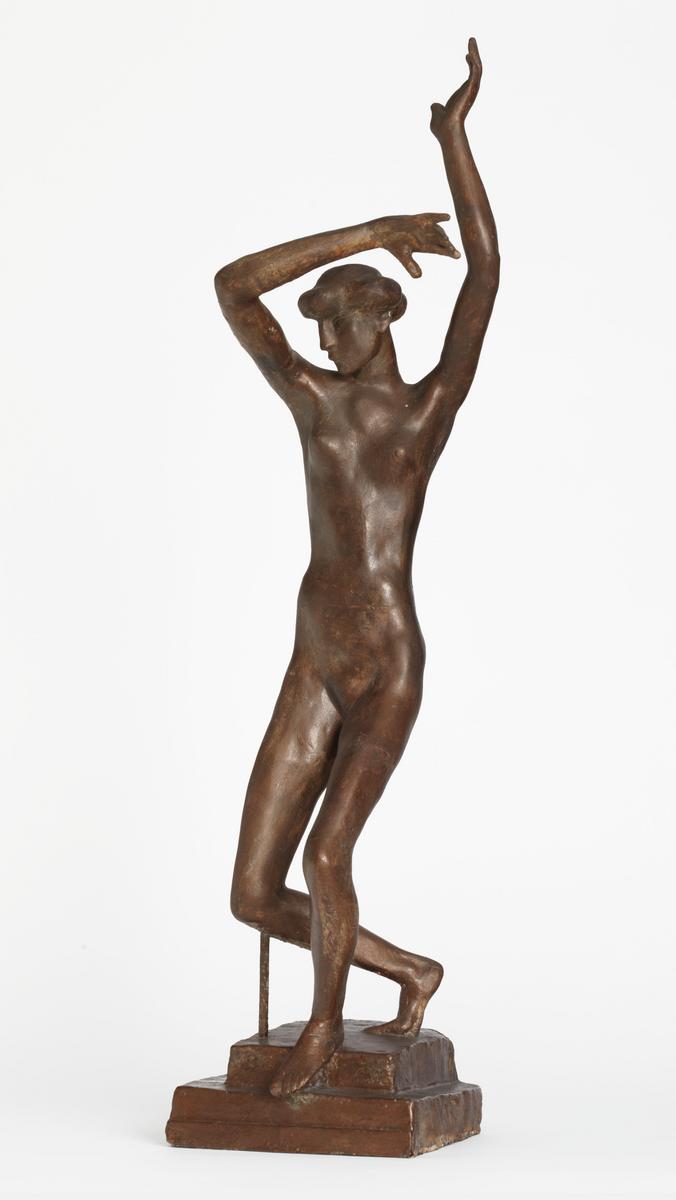
Henri Gaudier-Brzeska, The Dancer 1913
This work was first modelled in clay, which contributed to the sinuous elegance of its form. It has been described in terms of ‘fluidity and physical abandon’ and reflects Gaudier’s fascination with rhythm and movement. This was influenced by the theories of creative energy and of the world in a state of constant flux, proposed by the philosopher Henri Bergson. The figure is based on the painter Nina Hamnett, who danced naked in the studios of Paris. She had been admired by Isadora Duncan, the leading exponent of contemporary ‘free’ dance.
Gallery label, September 2016
11/24
artworks in Henri Gaudier-Brzeska
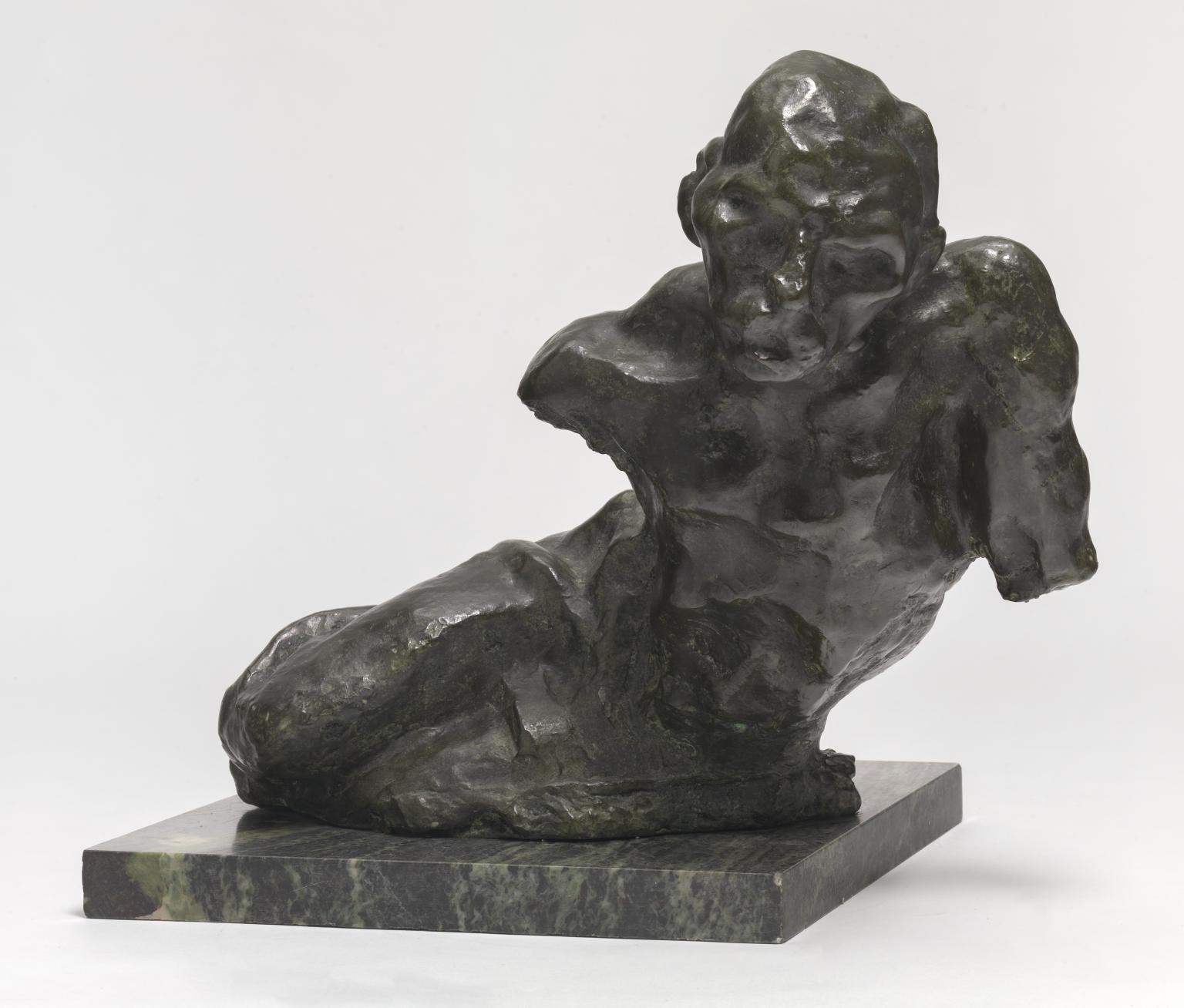
Henri Gaudier-Brzeska, Fallen Workman 1912, posthumous cast
'Fallen Workman' is believed to be a fragment of the original figure which had arms and depicted a man raising himself from the ground. The clay figure was cast, first in plaster and then in bronze. Gaudier-Brzeska's treatment of the subject, particularly in the modelling, is reminiscent of Rodin. In a letter to Sophie Brzeska of 1912 the artist acclaims Rodin's 'St John the Baptist' 1878: 'a beggar who walks along, who speaks and gesticulates - he belongs to my own time, is in my epoch, he has a twentieth century workman's body just as I see it and know it.'
Gallery label, August 2004
12/24
artworks in Henri Gaudier-Brzeska
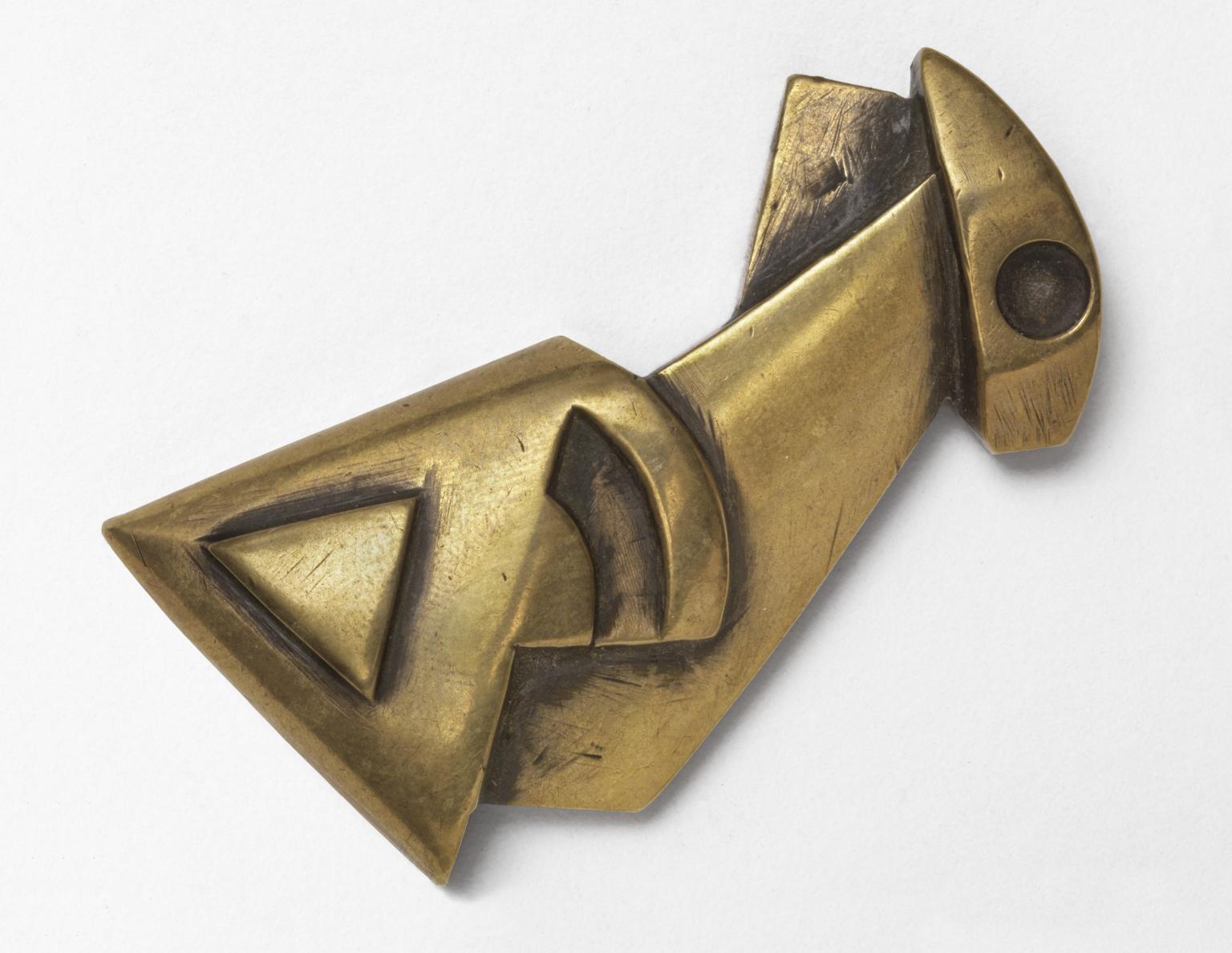
Henri Gaudier-Brzeska, Fish 1914
13/24
artworks in Henri Gaudier-Brzeska
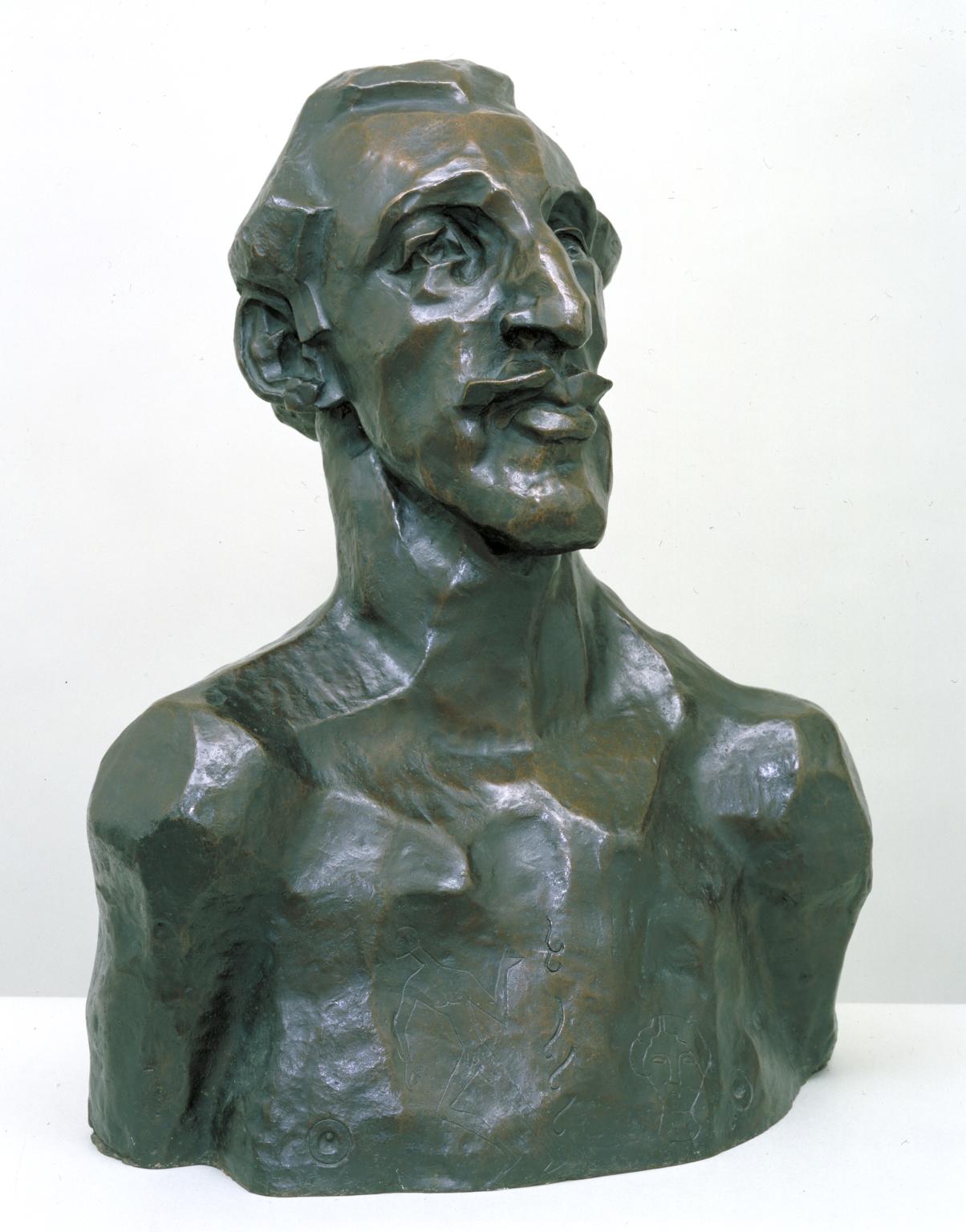
Henri Gaudier-Brzeska, Horace Brodzky 1913, cast 1956
In 1913 Gaudier-Brzeska became involved with the artists and writers who formed the Vorticist group the following year, and his work was influenced by the dynamic styles of Cubism and Futurism. Horace Brodzky (1885-1969) was an artist and critic, who later wrote of this work: ‘The bust, to use his own words, was ‘cubic’... he has emphasised the planes and exaggerated the asymmetrical in my head’. Brodzky’s bare-chested, heroic pose is slightly undermined by the playful addition of inverted nipples, and the drawings of a woman's head and a fleeing naked man scratched into the torso.
Henri Gaudier-Brzeska was born in 1891 in St Jean de Braye, near Orléans, in France. He died in battle at Neuville-Saint-Vaast in France in 1915.
Gallery label, September 2004
14/24
artworks in Henri Gaudier-Brzeska
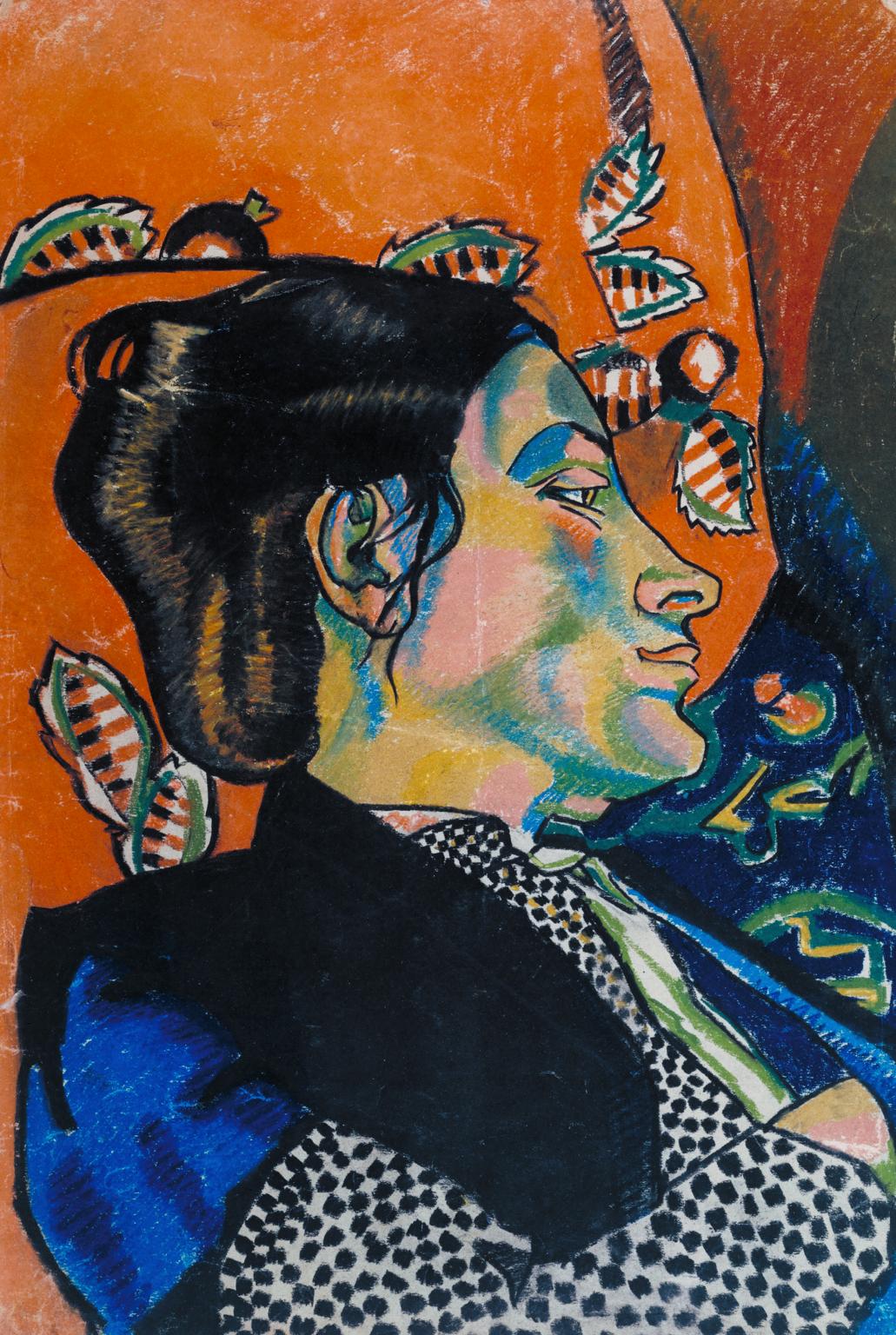
Henri Gaudier-Brzeska, Sophie Brzeska 1913
Gaudier met Sophie Brzeska, a Polish emigrée ten years his senior, in 1910. The two soon became companions and, though their relationship remained unconsummated, Gaudier added her surname to his for the sake of propriety.
The strong colour of pastels such as this, and of some of Gaudier's sculptures, was a response to Asian art, such as Japanese painting, Tibetan textiles and Russian ballet designs. He was also interested in the strongly-coloured paintings of Paul Gauguin and of the Fauves, and had met JD Fergusson, a Scottish follower of the Fauves.
Gallery label, September 2004
15/24
artworks in Henri Gaudier-Brzeska
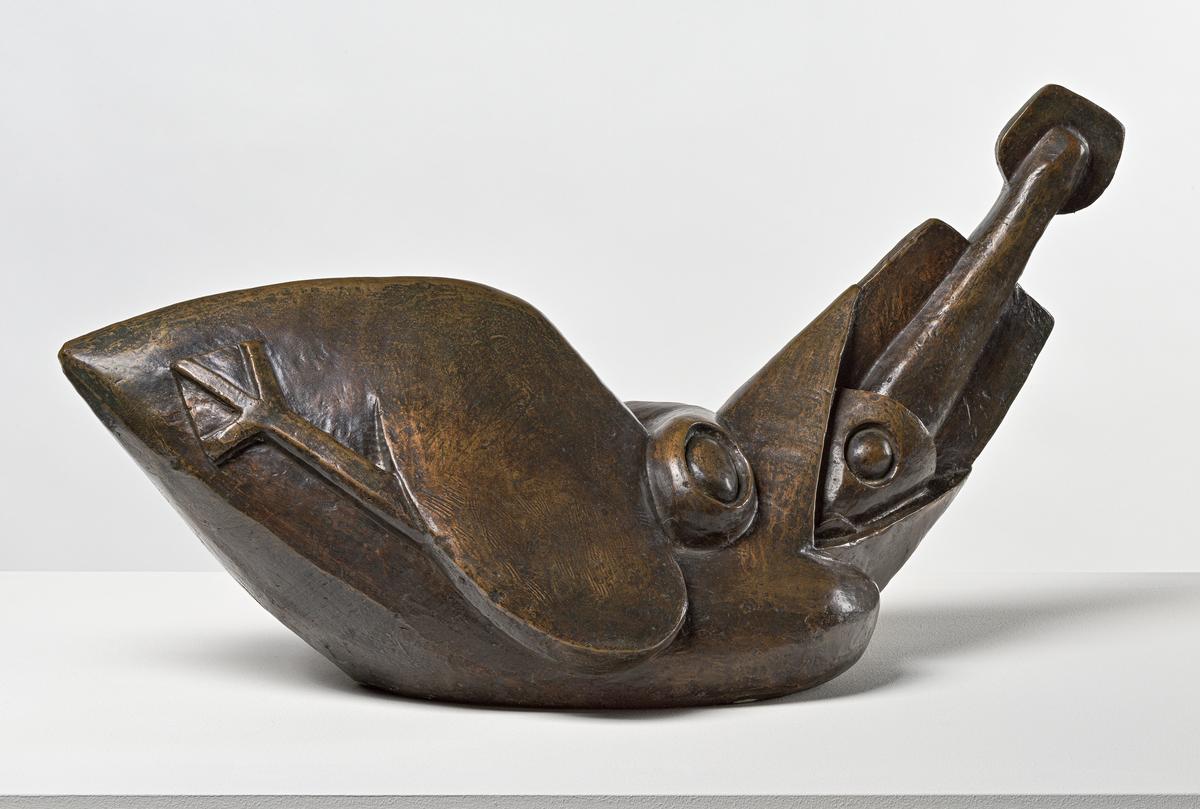
Henri Gaudier-Brzeska, Bird Swallowing a Fish c.1913–14, cast 1964
Gaudier-Brzeska saw a bird catching a fish in Hyde Park. Transforming this incident, his sculpture combines his interest in animal life with forms of themachine age. Bird and fish merge as a dynamic unity born out of violence. The torpedo-like fish is stuck in the gullet of the bird, with both struggling for survival. Even so, the form of the sculpture conveys no expressive emotion. Instead, it suggests a detached, mechanical act.
Gallery label, October 2020
16/24
artworks in Henri Gaudier-Brzeska
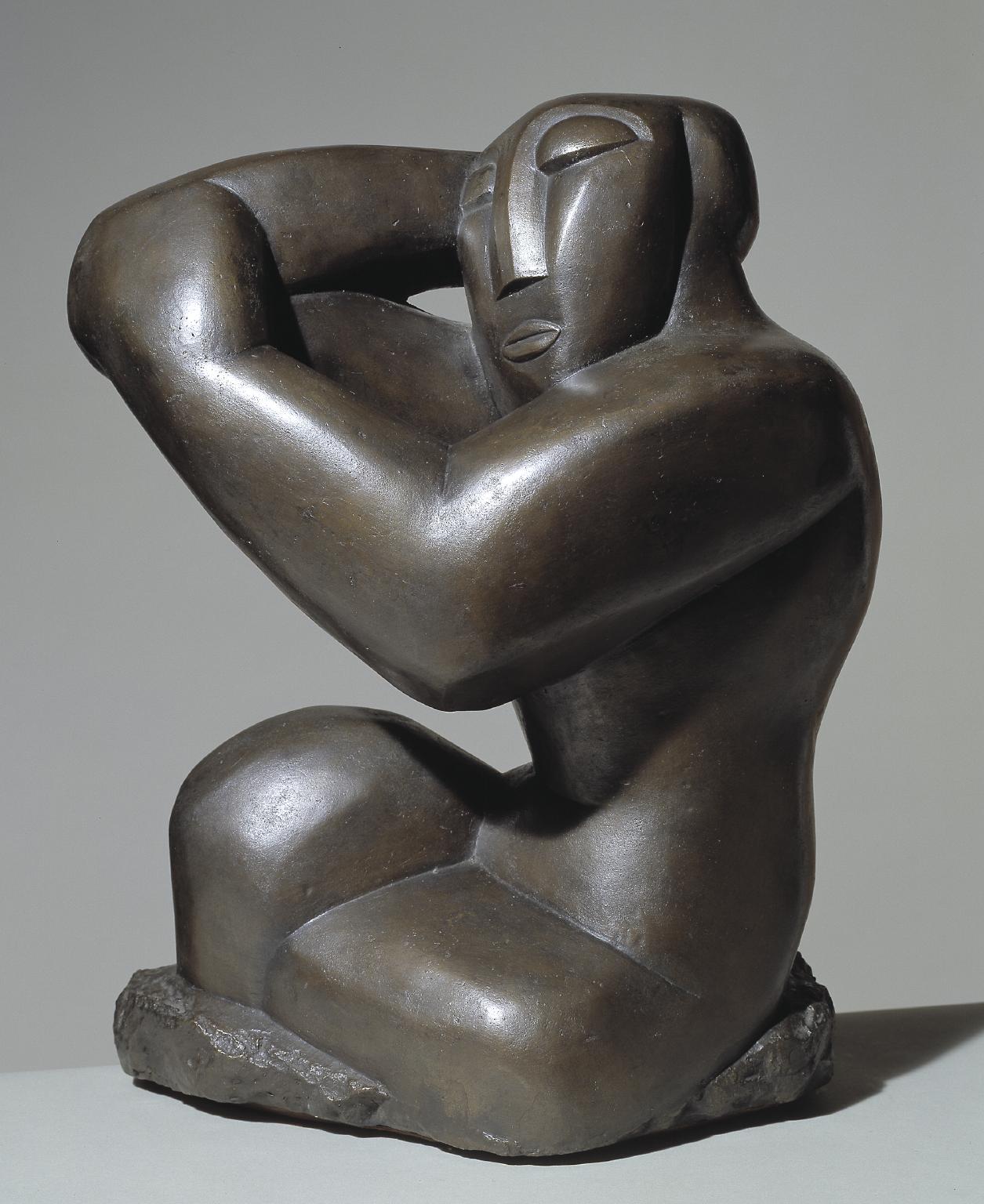
Henri Gaudier-Brzeska, Seated Woman 1914, posthumous cast
Henri Gaudier (who added Sophie Brzeska’s name to his own) carved Seated Woman on the eve of the First World War, though this bronze version was cast long after his death in the trenches. It shows his commitment to a dynamic modernism that made him a key figure in Vorticism in London. The reinvention and simplification of form reflect Gaudier’s view of the modern sculptor: ‘what he feels, he does so intensely, and his work is nothing more nor less than the abstraction of this intense feeling.’
Gallery label, March 2007
17/24
artworks in Henri Gaudier-Brzeska

Henri Gaudier-Brzeska, Standing Female Nude, Hands on Hips 1913
18/24
artworks in Henri Gaudier-Brzeska
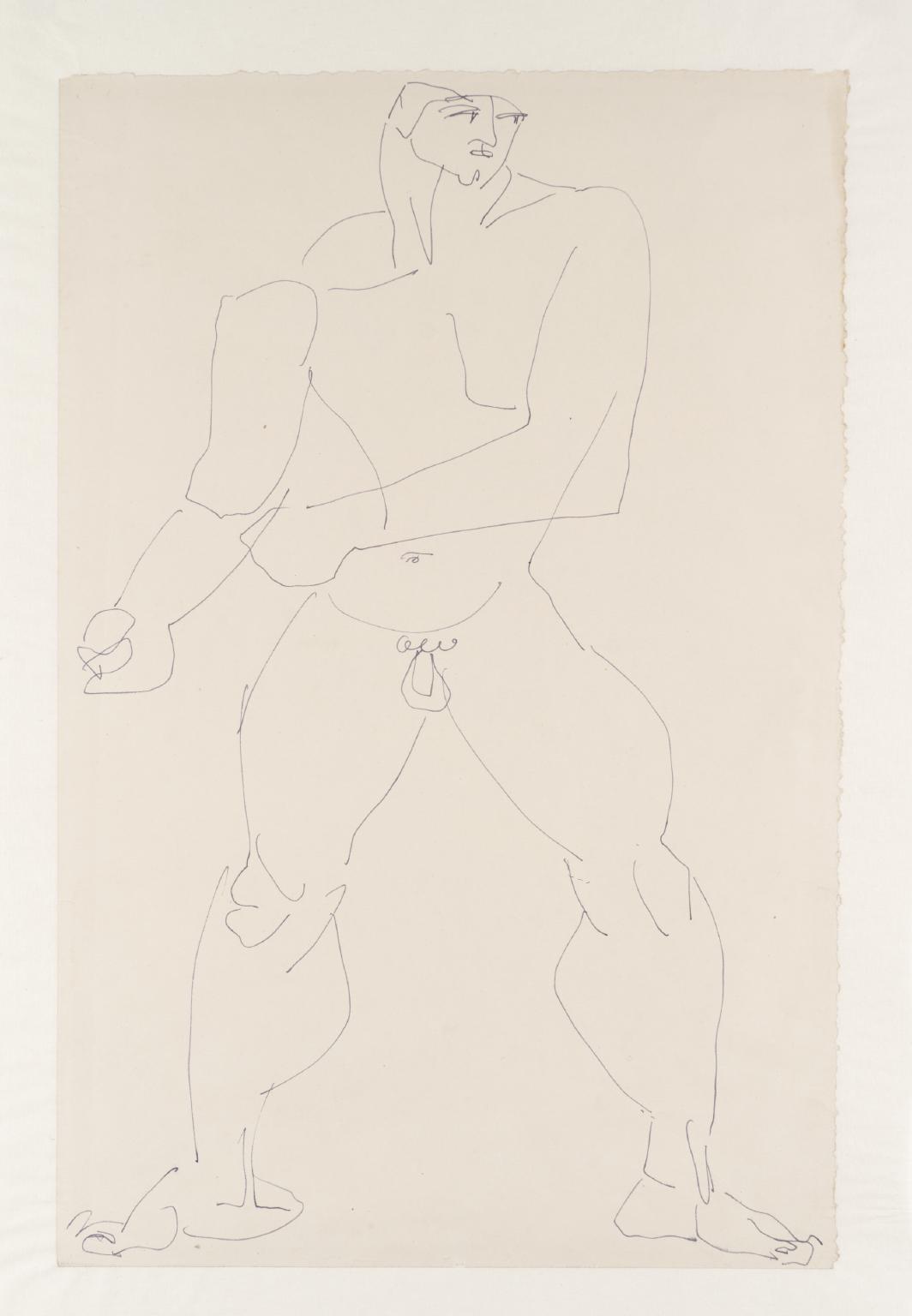
Henri Gaudier-Brzeska, Wrestler 1913
19/24
artworks in Henri Gaudier-Brzeska
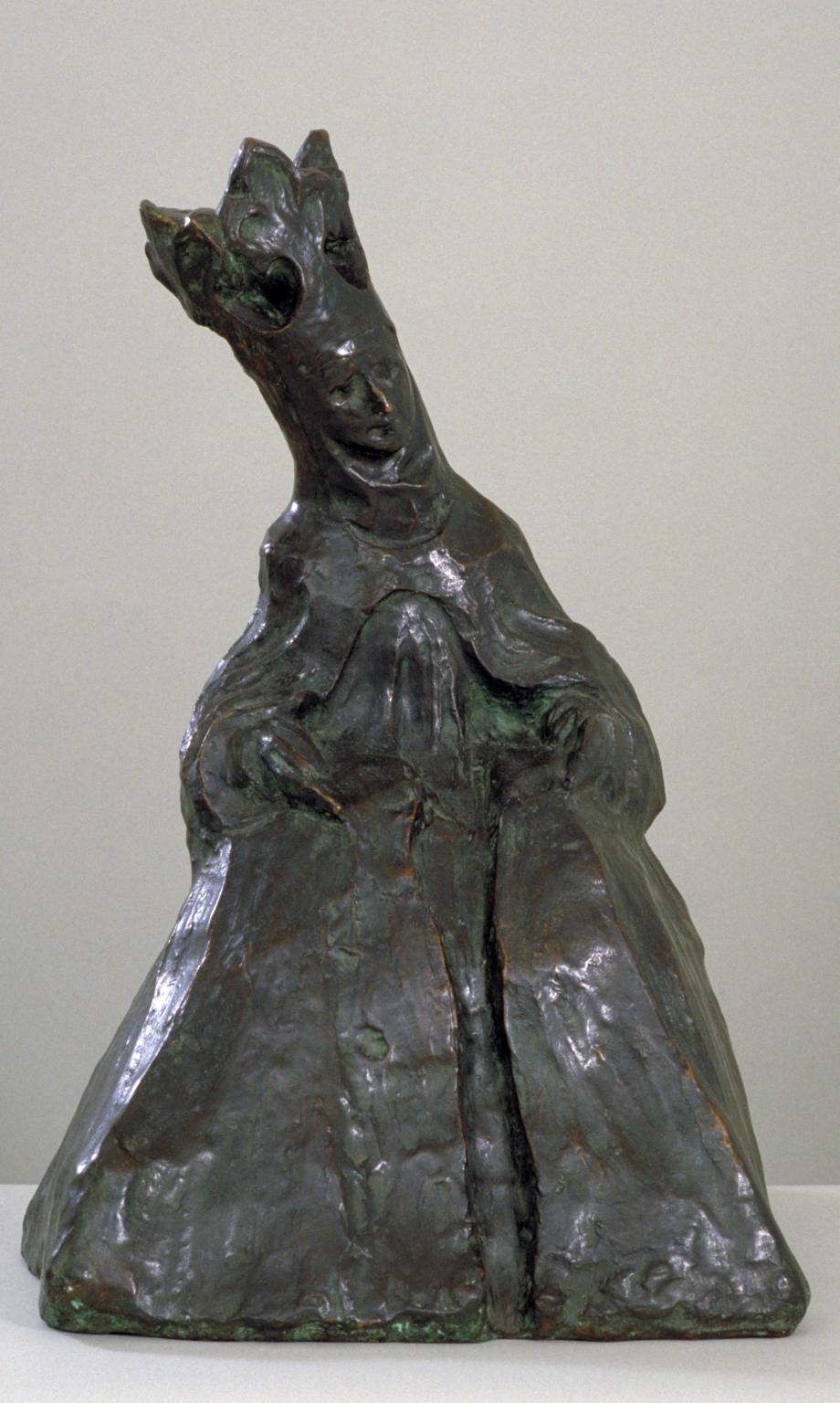
Henri Gaudier-Brzeska, Madonna 1912, cast 1960s
This is a posthumous cast of one of Gaudier-Brzeska's earliest extant sculptures and his first commission. In February 1912 Mr Leman Hare, the editor and critic, commissioned a statuette of Maria Carmi in her role as the Madonna in Max Rheinhardt's play The Miracle, then running at Olympia, London. The Miracle was a spectacular medieval pageant-cum-morality play involving a vast cast and elaborate staging. Although it was popular with audiences and critics alike, Gaudier-Brzeska remained unimpressed by its 'motley spectacular effect' (quoted in Silber, p.85). 'Maria Carmi' was a pseudonym for the Italian actress Norma Gilli who had made her stage debut in Vaudeville, Paris 1912 . She was a pupil of Max Rheinhardt from 1915-18, and in 1919 she returned to Italy to act in films. She later moved to New York. After making many sketches of the actress, Gaudier-Brzeska modeled the figure in clay, and cast it into plaster. While the sinuous folds and rhythms of the sculpture suggest an art nouveau influence, photographs of the stage production show that the artist was largely faithful to its representation of the Madonna. The gesture of the outstretched hand was taken directly from the show's staging, and the elaborate robes and highly ornate headdress were copied from the theatrical costumes. The dynamic juxtaposition of simplified geometric forms, evident in the play between the central pyramidal form and the tilted cylindrical shape of the figure's crowned head, acts as a compositional device to emphasise the Madonna's face. Her head is the axial point between the apex of the pyramid and the base of the cylinder. The emphasis is heightened by the disparity between the cursory modeling of her robes and the detailed rendering of her serene face. There were two lifetime plaster casts of the work, one of which was painted (Kettle's Yard, Cambridge) and another which was not (now lost). Although the colour of the painted plaster has now largely disappeared, a related pastel Maria Carmi as the Nun in 'The Miracle' (private collection, reproduced, Brodzky, pl.1 in colour) indicates what its colouring may have been. When the painted plaster version was shown at the Allied Artists Association exhibition at the Albert Hall, London in 1913, a bronze replica was advertised. However, as no orders appear to have been placed it is unlikely a bronze was cast at that date. Nine bronze casts were made in the 1960s, of which this is one. The original unpainted plaster cast is lost. Further reading:Evelyn Silber, Gaudier-Brzeska: Life and Art, London 1996, pp.85 and 252-3, reproduced p.152, pl.14Roger Cole, Gaudier-Brzeska: Artist and Myth, Bristol 1995, pp.31-2Horace Brodzky, Gaudier-Brzeska Drawings, London 1946Jeremy Lewison (ed.), Henri Gaudier-Brzeska, sculptor 1891-1915, exhibition catalogue, Kettle's Yard Gallery, Cambridge 1983, pp34-5, reproduced p.35, cat.no.8 Toby TrevesMay 2000
20/24
artworks in Henri Gaudier-Brzeska
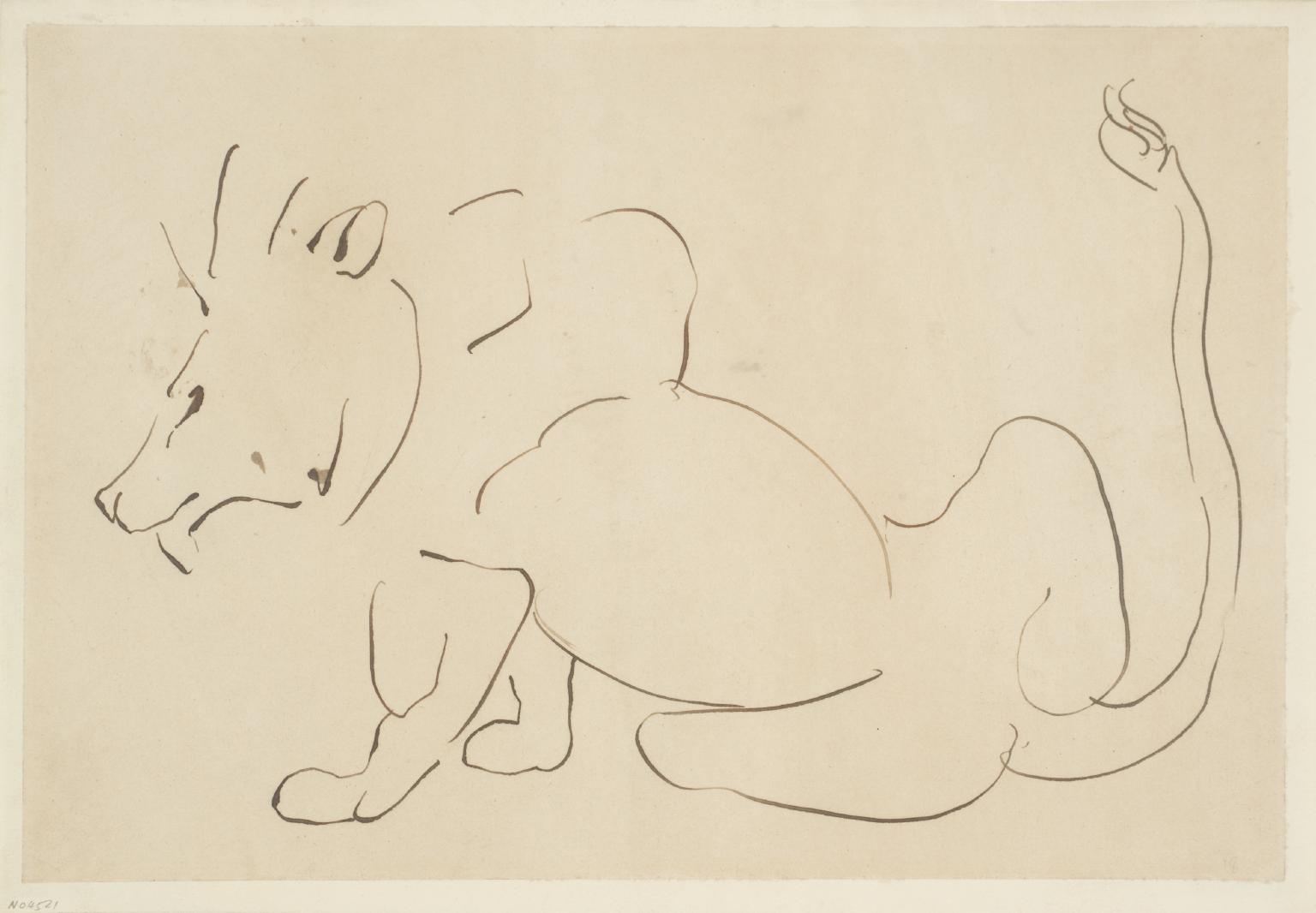
Henri Gaudier-Brzeska, Lion c.1912–13
21/24
artworks in Henri Gaudier-Brzeska
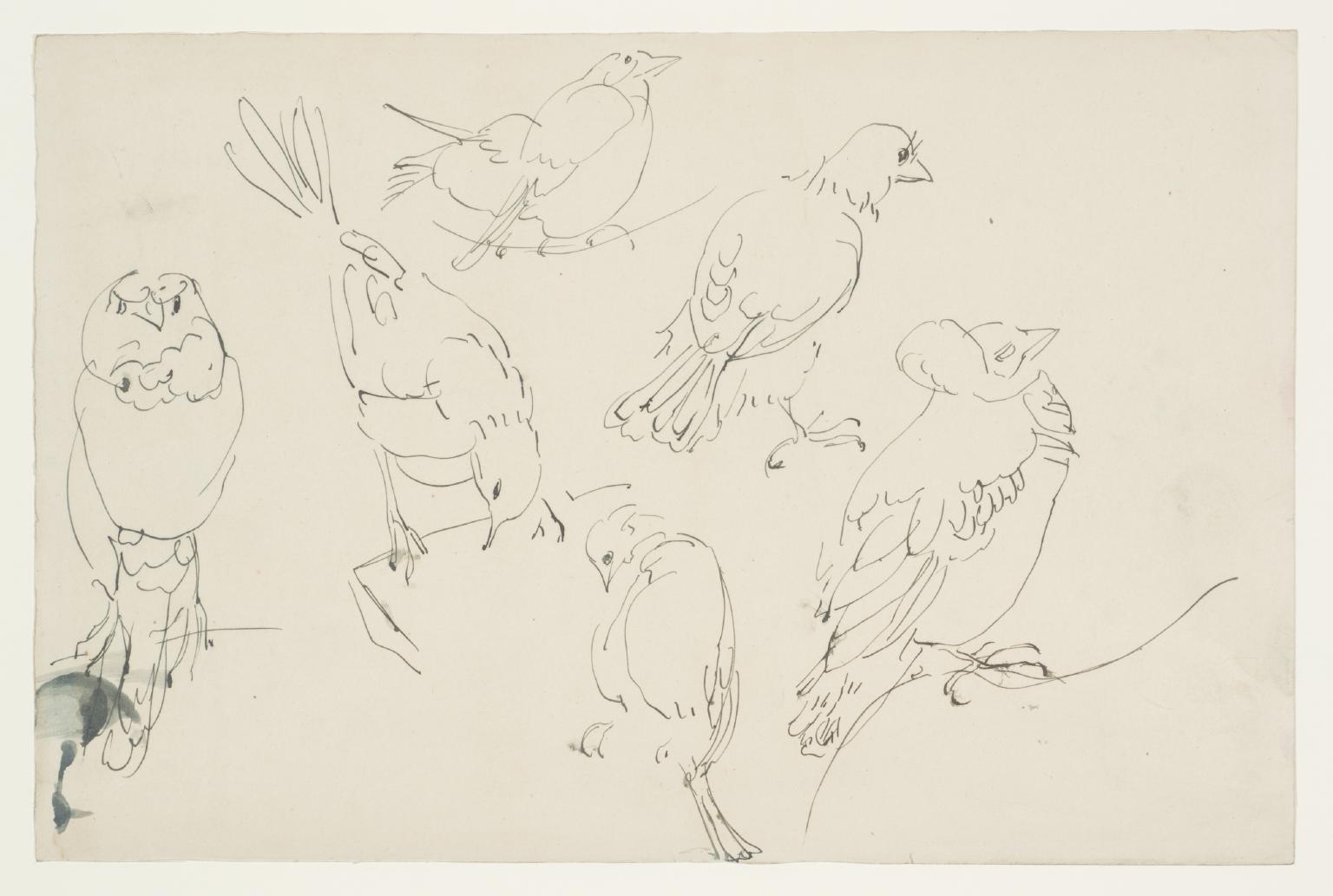
Henri Gaudier-Brzeska, Studies of Birds c.1912–13
22/24
artworks in Henri Gaudier-Brzeska

Henri Gaudier-Brzeska, Singer 1913
This was one of Gaudier-Brzeska’s largest sculptures to date, and was probably carved as a garden ornament. Its style and the pose of the figure reveal his interest in ancient Greek sculpture. The suggestion that the figure is emerging from a block of stone was an effect Gaudier-Brzeska borrowed from the French sculptor Auguste Rodin. The subject of a singer was quite rare in sculpture. It might suggest that the sculptor releases life from stone like a singer releasing a song from their body.
Gallery label, April 2021
23/24
artworks in Henri Gaudier-Brzeska
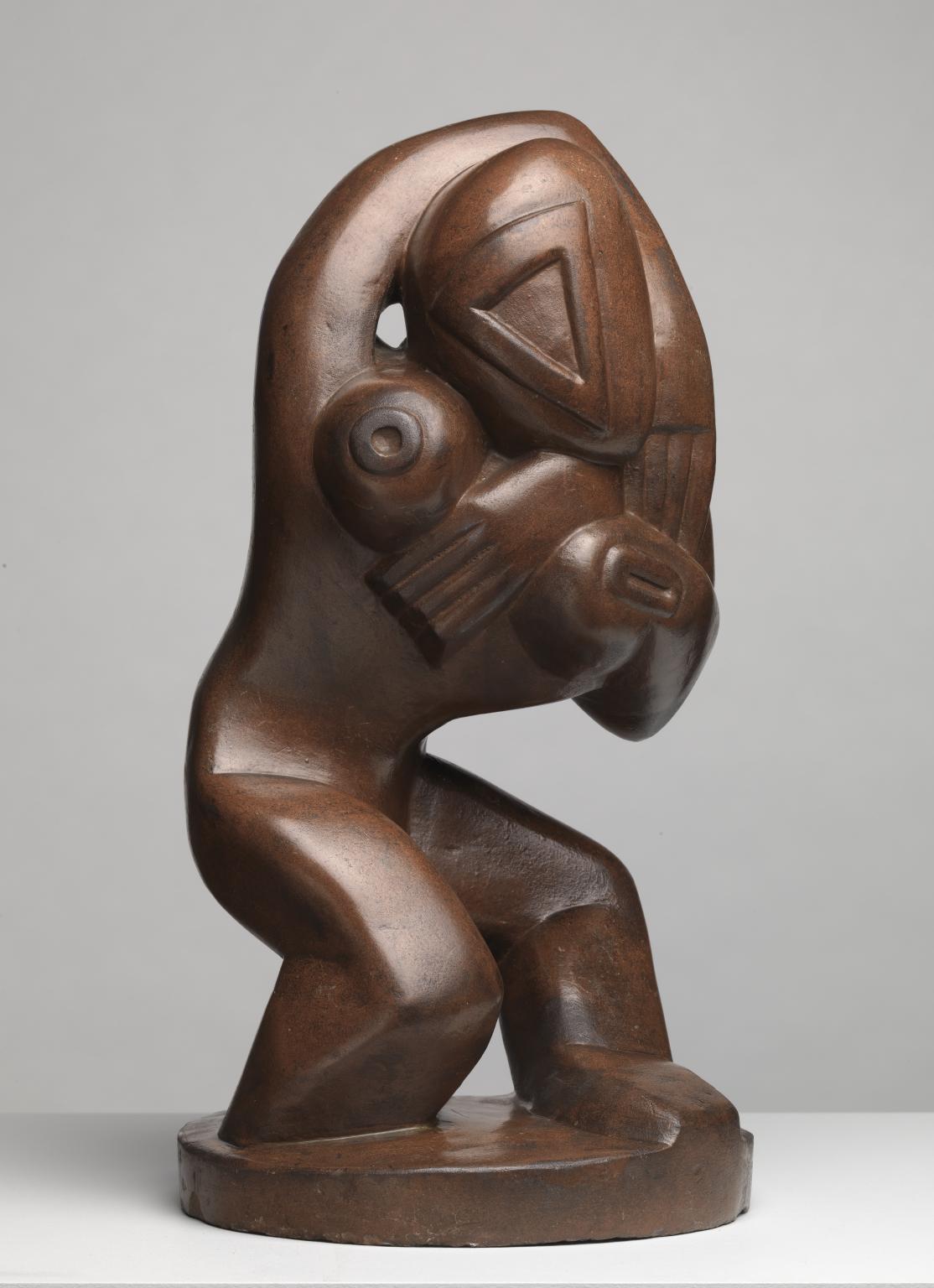
Henri Gaudier-Brzeska, Red Stone Dancer c.1913
Gaudier-Brzeska gathered and incorporated sculptural ideas from many different cultures in his work. At the British Museum he looked at the ancient Greek and Assyrian rooms and the Ethnographical Gallery in the upper floor. This contained artworks taken – sometimes forcibly – from indigenous peoples around the world. In Red Stone Dancer Gaudier-Brzeska draws on these sources to create his own sculptural language, with geometrical elements such as the triangle and circle imprinted on its face and breast. Its stance suggests a twisting movement compressed into a moment of stillness.
Gallery label, October 2020
24/24
artworks in Henri Gaudier-Brzeska
Art in this room
























You've viewed 6/24 artworks
You've viewed 24/24 artworks
